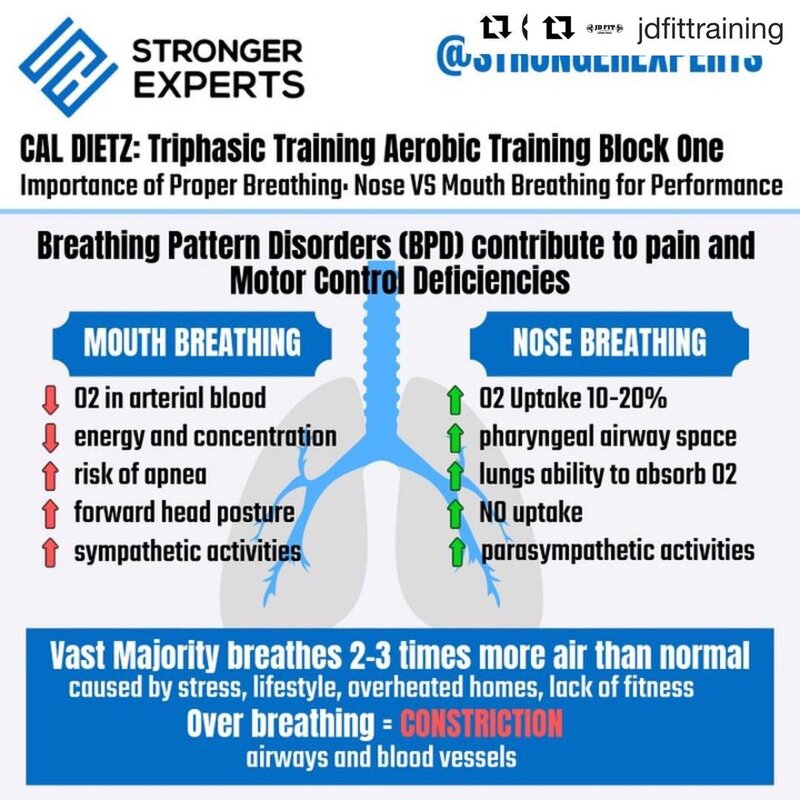|
By: Regan Quaal & Jesper Mårtensson
Edited by: Amy Hobday INTRODUCTION We have all probably said to ourselves when performing a conditioning session “I will do this for X amount of time or do these intervals for X amount of time”. On the other hand, we have also most likely said to ourselves when performing a weight room session “I will do this exercise for X repetitions”. The question is: Why are we only prescribing duration for conditioning and not for exercises? Both serve the exact same purpose, preparing an athlete to compete in sport, so why do we differ between the two? They should not be thought of as separate entities because all qualities can be developed using both scenarios, especially when it comes to preparing an athlete from an energy system profile perspective. Sport is timed by duration, not by number of repetitions, so using timed sets for the weight room makes much more sense if we are trying to develop training programs that are specific to the demands of sport. On top of that, utilizing time will control for the possible variance in training volumes amongst your athletes and is the best method to develop repeat sprint ability.
1 Comment
GUIDELINES · 20-60 minutes · Work to rest ratio b/w 2:1-4:1 · 3-6 different cyclical activities w/in circuit · Strictly nasal breathing · Heart rate 60-80% of max BENEFITS · Exercise Efficiency: improve ability to sustain higher levels of output aerobically · Recovery: promotes blood flow to muscles at low intensities · CO2 Tolerance: increases amount of oxygen available to muscles to utilize · Blood Flow Redirection: by rotating through different movements that emphasize different body parts, it forces blood to constantly be pumped to different places · Heart Rate Awareness: focus on controlling heart rate during rest periods · Resting Heart Rate: by increasing stroke volume and cardiac efficiency through more blood being ejected each beat MY GO TO IMPLEMENTATION · 40-60 minutes: 40s ON/ 20s OFF · Exercise Rotation: A) Single Under, B) Ski Erg, C) Rowing, D) Curved Treadmill, E) Assault Bike · Nasal Breathing & Heart Rate 140-160bpm · I prefer the 2:1 work to rest ratio because it allows me to perform the intervals at higher outputs since I have time to partially recover during the rest. · I also have found this to be the best way to order the exercise because 1. It prevents me from utilizing the same major muscle groups for two continuous intervals, so I’m avoiding metabolite build up in the muscle (staying aerobic) and am training my ability to redirect blood flow 2. It’s ordered from lowest to highest output (in my opinion), so by the time I finish E) my heart rate is peaking, then during A) & B) it drops back down until it builds back up again, teaching me how to use certain exercises for recovery and control my heart rate
ADAPTATIONS - LOCAL MUSCULAR ENDURANCE/WORK CAPACITY: target a specific muscle group by holding one position for an extended duration - ACIDOSIS TOLERANCE: performing an isometric in the bottom portion of a movement when the muscle is stretched, causes occlusion leading to a large build of metabolites - LACTATE UTILIZATION: when these metabolites are built up and trapped in the muscle, it improve your ability to recycle them and use them as an immediate fuel source, since there is minimal new blood flow into the muscle - TENDON HEALTH: increased tendon and connective tissue thickness and load tolerance - INCORRECT COMPENSATION PATTERNS: simplifies teaching individuals how to drive through/fire the correct muscle groups to perform the movement maximally and efficiently - MECHANICAL STRESS ON JOINTS: due to the minimal amount of movement and impact that takes place the joints experience nearly no negative effects HOW TO · COACHING CUE: when performing isometric don’t think about resisting going down agonist muscles, think about pulling self-down with antagonist muscles (IE: in Bench Press think squeezing scaps down and back to get bigger stretch in chest) · Perform the isometrics for 3-5 MINUTES at a near maximal intensity · Hold the isometric in the disadvantageous/bottom position of the movement where the muscle is stretched · Choose exercises that mimic/utilize muscle groups that are important to high performance in your sport IMPLEMENTATION DURING GPP (Block 2: Option B) · PRESCRIPTION · 1 set each exercise: 3-5 minutes work/ 3-5 minutes rest, 1-2x per week · Start with 15-25% of max for load · EXERCISES · Right Split Squat, DB Bench Press, DB Chest Supported Row, Left Split Squat, DB Z Press, Glute Bridge w/ Plate Pullover
HOW TO · LACTATE RETENTION METHOD is completed by performing an isometric movement immediately following an exercise interval that produces lactate/metabolites · The ISOMETRIC MOVEMENT that is used must utilize the same muscle groups as the previous exercise interval and be held at a long muscle length for 20-40 seconds · The EXERCISE INTERVAL must produce lactate/metabolites (generally meaning it must occur 20-40 seconds at minimum and be performed at a high intensity) ADAPTATIONS · Improved LOCAL MUSCULAR ENDURANCE/acidosis tolerance · Increased ability to SUSTAIN HIGH POWER OUTPUTS for longer/lactate tolerance · Enhanced LACTATE UTILIZATION · Increased time under tension/HYPERTROPHY OTHER BENEFITS · Experience LESS MECHANICAL DAMAGE on joints when performing isometrics for extra volume instead performing more repetitions · Train at HIGHER INTENSITIES during volume phases because a large percentage of work is made up by submaximal isometric movements · Improve BODY AWARENESS by correcting positions and ensuring the right muscles are firing during isometric · MINIMIZE fatigue and soreness during high volume training IMPLEMENTING LRM · It can be done with any form of exercise that produces lactate · For conditioning purposes, I prefer to use bike sprints, stair sprints, jumps squats, and jumping lunge · For hypertrophy purposes, I use compound movement like squats, split squats, presses, and pulls · When using LRM the adaptations are not global and are only applicable to the muscle group being utilized, so choose the exercises based on the needs of the individual you are working with Click Link Below to Lactate Retention Method Article LACTATE RETENTION METHOD - MUSCLE ACTIVATION: highest level of motor unit recruitment - INTRAMUSCULAR COORDINATION: turning the right muscles on/off for efficient movement - VASCULAR SYSTEM ELASTICITY: decrease RHR, limit metaborerlex & remove blockages - FAST TWITCH FIBER CAPACITY: increase mitochondrial density and oxygen utilization capabilities HOW I IMPLEMENT THEM IN GPP (Block 2: Option A) - PRESCRIPTION - 3-5 sets: 5-10 sec work/ 30-60 sec rest, 1-2x per week (circuit fashion) - EXERCISES - Split Squat Deadlift, Bench Press, SL Hip Thrust, Chest Supported Row, Mid-Thigh Pull, Z-Press
It depends because.. • CARDIAC LAG -> when exercise intensity suddenly increases it takes awhile for your heart rate to climb and match the high outputs you are training at, so it not an accurate measurement of your exertion during short high intensity intervals INSTEAD, use another metric like watts/speed to measure your perceived exertion when performing high intensity intervals that last less than 60 seconds UNLESS, you are using the monitor to track your recovery capacity, by measuring how it takes for your heart rate to drop - GPP = GENERAL PHYSICAL PREPAREDNESS - For future training to be as effective and efficient as possible, time must be dedicated to preparing for the high level of stress you will be gradually encountering - This is done by developing a well-rounded foundation that can be built off of - DAILY GPP OUTLINE - BLOCK 1: Isolate & target lagging or injury prone joints & muscle groups - BLOCK 2: Improve neural drive, tendon integrity, and full spectrum energy system development - BLOCK 3: Develop oxidative system via both delivery and utilization limitation-based adaptations Click Link Below for Ultimate GPP ULTIMATE GPP PROTOCOL By: Regan Quaal
WHAT IS GENERAL PHYSICAL PREPAREDNESS? There are many terms in the fitness/strength & conditioning industry that are overused to the point where people can no longer actually define them. GPP or general physical preparedness is an example of one those terms, that is often spoken about, but hard to define. In its simplest form GPP training is any training that isn’t specific to what is required in your sport or occupation. Even though GPP training is not specific itself, the idea behind it is that improving your general physical qualities will transfer over to improving your sport specific performance by making you a more robust individual. Robustness is developed by minimizing your weaknesses in your general physical skill set and by widening your scope of physical capabilities to answer any performance related problems you may encounter. GPP: WIDENING THE BASE As we have all heard many times, a pyramid can only be as tall as its base is wide. Essentially, this means having a wide base is very important if you want to reach peak performance. GPP is the base of the pyramid, so spending a dedicated period of time establishing this is essential for long term success and development. In order for this to happen certain components of training must be included in the program to lay a solid foundation. The major components that should be focused on are motor pattern learning, work capacity, and movement variability. Obviously, there is a long list of other things one may choose to focus on as well, but these three components cannot be overlooked because of the pivotal role they play in athletic development, as I will discuss later on. |
Categories
All
Archives
February 2023
Regan QuaalHead Strength & Conditioning Coach at Shakopee High School |
||||||||||||||||||||||||||||||||||||





 RSS Feed
RSS Feed